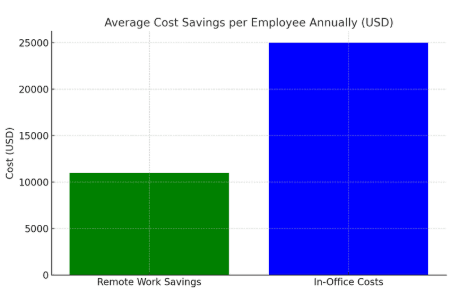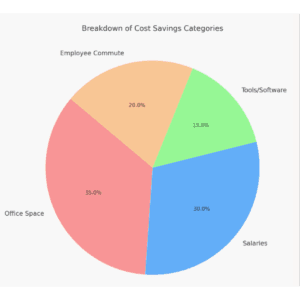
The Complete Guide to Hiring and Saving: Remote Workforce Solutions
In today’s rapidly evolving business landscape, remote hiring has emerged as a game-changer for companies of all sizes. Building a remote team can unlock unprecedented opportunities for cost savings, efficiency, and access to global talent, whether you’re a startup, a growing SME, or a large corporation. According to Global Workplace Analytics, businesses can save up to $11,000 per employee annually by transitioning to remote work. This guide explores hiring effectively and maximizing savings with a remote workforce.

Chapter 1: Why Choose Remote Hiring?
1.1 Access a Global Talent Pool
Geography often limits traditional hiring, but remote hiring eliminates these barriers. Companies can access a diverse range of highly skilled professionals worldwide. For example, a 2023 survey by Buffer found that 76% of remote workers are highly skilled in their respective fields, providing businesses with unparalleled access to top-tier talent.
In Latin America, the remote work market is booming, with a 175% increase in job postings for remote roles between 2020 and 2023 (LinkedIn Economic Graph). Countries like Mexico, Brazil, and Argentina have become top destinations for remote talent due to their skilled workforce and competitive costs.

1.2 Cost Savings
- Reduced Overhead Costs: Businesses can significantly cut expenses by eliminating the need for physical office spaces, utilities, and maintenance. A survey by Owl Labs showed that businesses saved an average of 30% on office costs by adopting remote work.
- Lower Salaries Without Compromising Quality: Hiring from regions with lower living costs allows companies to offer competitive salaries that are cost-effective while ensuring high-quality work. For instance, hiring a developer in Latin America can cost 30-50% less than in the United States while maintaining the same skill level.
- Reduced Commuting Costs for Employees: Remote work can lower employee commuting expenses, adding to job satisfaction. According to FlexJobs, employees save an average of $4,000 per year by working remotely.

1.3 Increased Flexibility and Productivity
Remote workers often enjoy greater work-life balance, leading to increased job satisfaction and productivity. Flexible working hours mean businesses can:
- Operate across multiple time zones, ensuring global coverage.
- Offer 24/7 customer support or service coverage.
- Quickly adapt to changing market needs with agile teams. A Stanford study found that remote workers are 13% more productive compared to their in-office counterparts.

